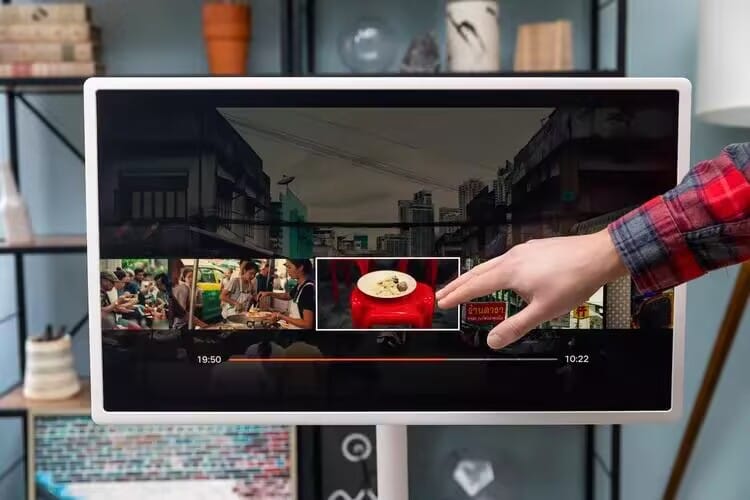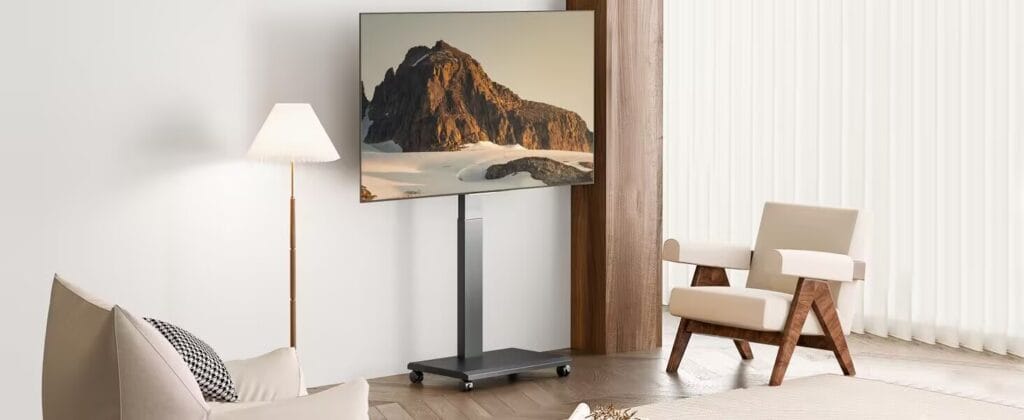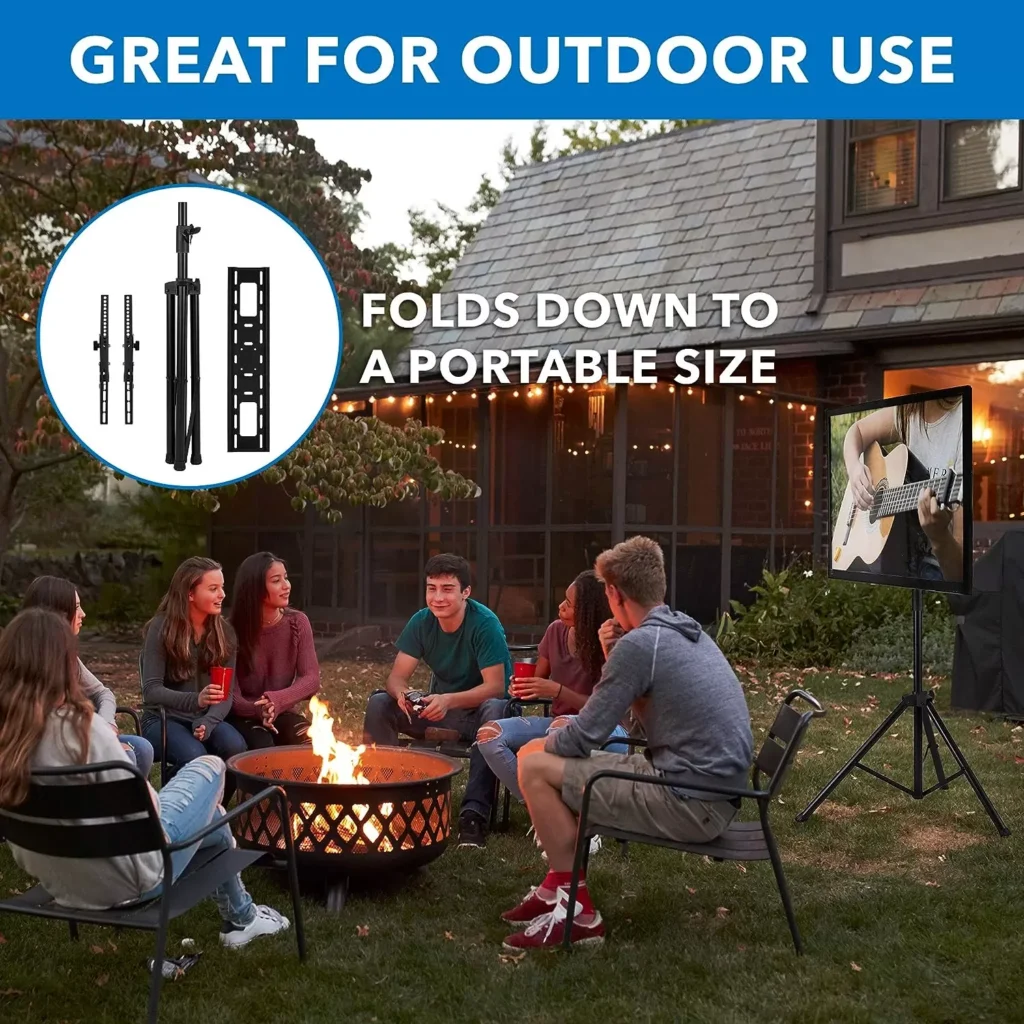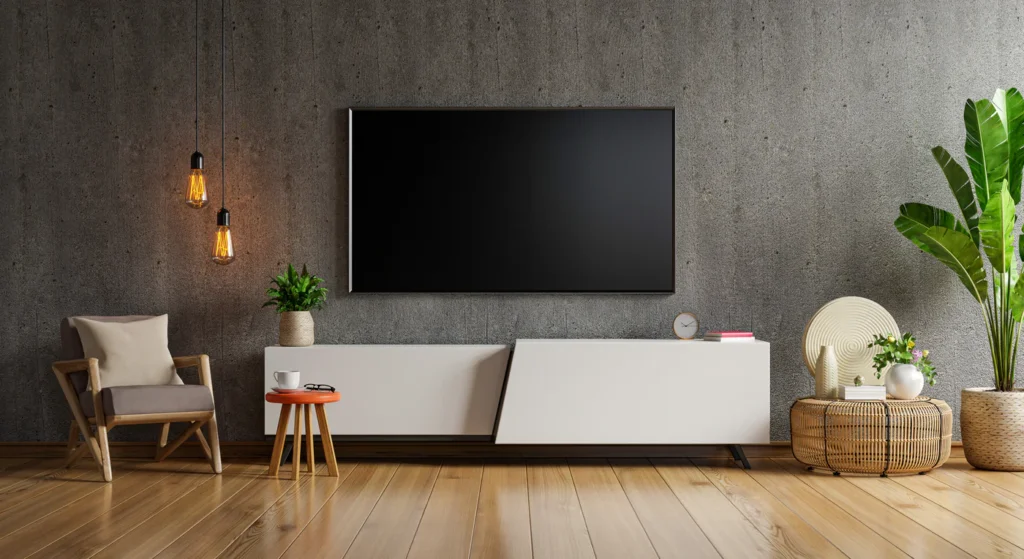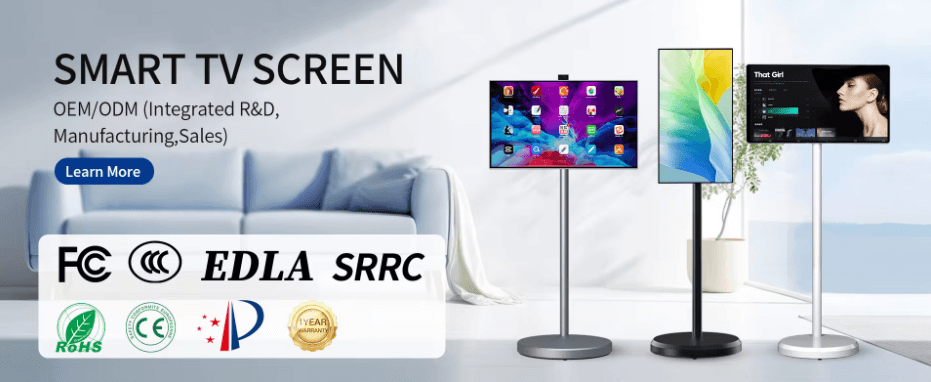In the age of smart devices, both portable touch screen TVs and tablets offer flexibility, convenience, and entertainment on the go. However, depending on your specific needs, one may be better suited for you than the other. With the variety of sizes, features, and prices available, it can be challenging to decide which device is the right fit for your lifestyle or work setup.
In this blog, we’ll explore the key differences between portable touch screen TVs and tablets, analyzing factors like size, performance, usability, and cost to help you make an informed decision. Let’s dive into the comparison and determine which option works best for you.
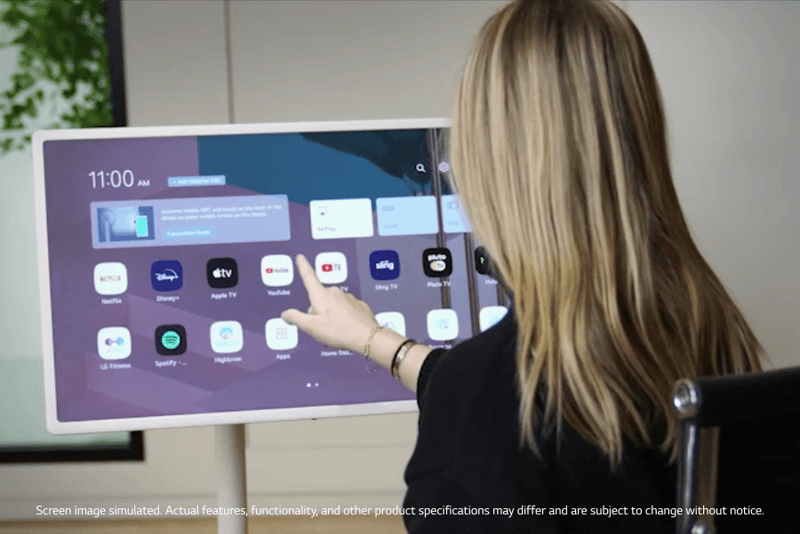
1. Display Size and Viewing Experience
One of the most notable differences between portable touch screen TVs and tablets is the screen size. Portable touch screen TVs typically offer larger displays, ranging from 15 to 24 inches, while tablets usually have screens between 7 and 12 inches.
If you’re someone who enjoys watching movies, streaming shows, or playing games on a big screen, a portable touch screen TV would likely enhance your experience. Larger displays provide a more immersive viewing experience, with clearer visuals and more room for multiple viewers. The high resolution of these portable TVs often comes with 1080p or even 4K, making it perfect for watching high-definition content.
Tablets, on the other hand, have more compact screens, making them ideal for reading, casual browsing, or mobile gaming. If you prioritize portability and want a device that fits easily in your backpack or can be used while lying in bed, a tablet might be more convenient. Tablets are also highly versatile for day-to-day usage, offering a balance between screen size and portability.
2. Portability and Convenience
When it comes to portability, tablets have the clear edge. Tablets are designed to be extremely lightweight and portable, easily fitting into a handbag, backpack, or even large pockets. They are ideal for traveling professionals, students, or anyone who needs a portable device for quick tasks, reading, or browsing on the go.
Portable touch screen TVs, although still portable, are bulkier compared to tablets due to their larger screen sizes. While they can be easily moved from one room to another or taken on trips, they won’t offer the same level of portability as a tablet. That said, portable TVs with built-in touch screens are great for home entertainment, presentations, or on-the-go productivity setups where screen size is a priority.
3. Touch Screen Usability
Both portable touch screen TVs and tablets come with touch screen capabilities, making them intuitive and easy to use. However, there are key differences in how they’re utilized.
Tablets are optimized for touch interaction, with responsive and user-friendly interfaces that make navigation, typing, and multi-touch gestures seamless. Tablets often support apps specifically designed for touch input, allowing users to interact directly with their media, productivity tools, and games. Tablets also frequently include features like stylus support, adding more versatility for creative professionals.
Portable touch screen TVs are primarily designed for media consumption and display purposes, so their touch screen functionality may not be as robust or feature-rich as tablets. That said, they excel in specific applications like collaborative presentations, digital whiteboards, or interactive workspaces, where larger screen sizes paired with touch capabilities are a plus.
4. Performance and Power
When comparing the performance of portable touch screen TVs and tablets, it often comes down to the specific model and the intended use.
Tablets, especially those from premium brands like Apple or Samsung, can be equipped with high-performance processors, large storage capacities, and advanced graphics. This makes tablets excellent for multitasking, running complex apps, or even handling professional-level creative work such as photo editing or graphic design. Tablets are generally more powerful when it comes to running standalone applications and mobile games.
Portable touch screen TVs, however, are more focused on delivering a quality viewing experience. While some models come with smart TV features like Wi-Fi connectivity and access to streaming apps, their primary use is for content consumption. They may not offer the same processing power or multitasking capabilities as a tablet, but they excel at displaying media in high resolution with vivid colors and larger visuals. In terms of productivity, portable TVs shine when used as external displays or during interactive presentations.
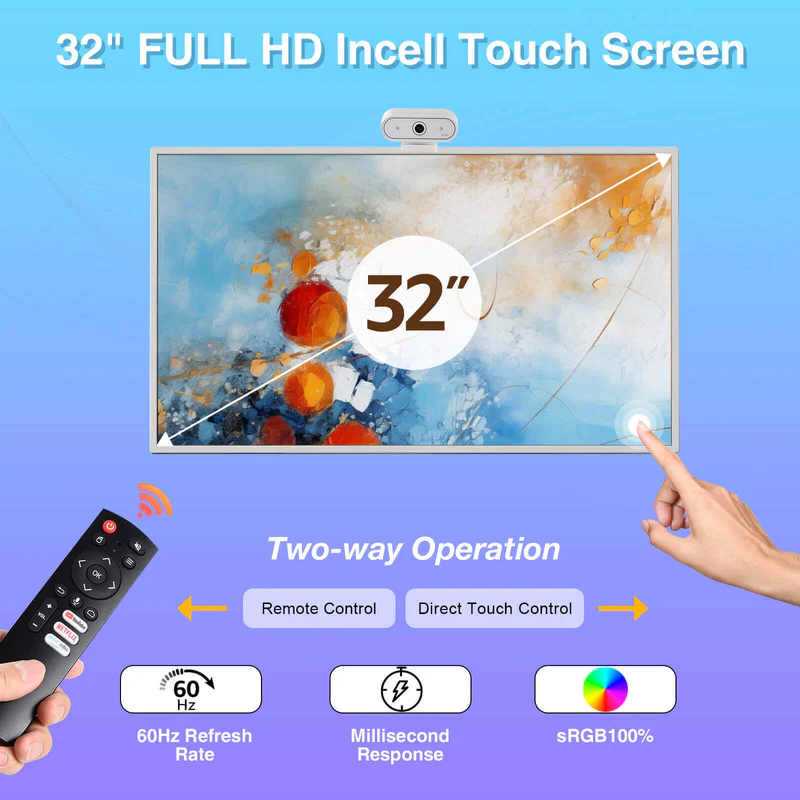
5. Battery Life and Power Consumption
Battery life is an important factor when choosing between a portable touch screen TV and a tablet, especially for users who need long-lasting usage throughout the day.
Tablets typically offer extended battery life, ranging from 8 to 12 hours of usage, depending on the brand and model. This makes them highly reliable for users who need to work, browse, or stream for extended periods without needing to recharge. Tablets are also more power-efficient, designed to run on smaller batteries while still delivering powerful performance.
Portable touch screen TVs, on the other hand, may not have as long battery life as tablets, especially models with larger screens and higher resolutions. While some portable TVs are designed with built-in batteries, others may require an external power source after a few hours of usage. For those using portable TVs in outdoor settings or for extended periods, you may need to consider access to power or invest in a model with a strong battery life.
6. Cost and Value
Cost is a crucial factor when choosing between a portable touch screen TV and a tablet. Generally, tablets range from affordable to premium, with entry-level models starting around $100 and high-end devices costing over $1,000. The price varies based on brand, size, storage, and processing power, but there’s typically a tablet available for most budgets.
Portable touch screen TVs, particularly larger models, can be more expensive than entry-level tablets due to the additional features such as larger screens, higher resolution, and touch capabilities. Prices for portable touch screen TVs often start around $200 and can go up to $1,000 or more, depending on the specifications. However, for those seeking larger screen real estate and interactive capabilities, the investment in a portable TV may be worthwhile.
Conclusion: Which Is Better for You?
Ultimately, the decision between a portable touch screen TV and a tablet comes down to your personal needs and how you plan to use the device.
- If you value portability, app versatility, and all-day battery life, a tablet is likely the better choice. Tablets are perfect for everyday tasks, creative work, and entertainment on the go.
- If you prioritize large screen size, interactive presentations, and media consumption, then a portable touch screen TV is an excellent option. This device is ideal for home use, collaborative workspaces, or as an additional display for increased productivity.
For those seeking to boost productivity and entertainment on the go, Onext offers a range of high-quality portable touch screen TVs designed to meet your needs. Explore our selection of innovative, feature-packed products at Onext Portable Monitors and elevate your work or entertainment experience.
Onext related product recommendations
-
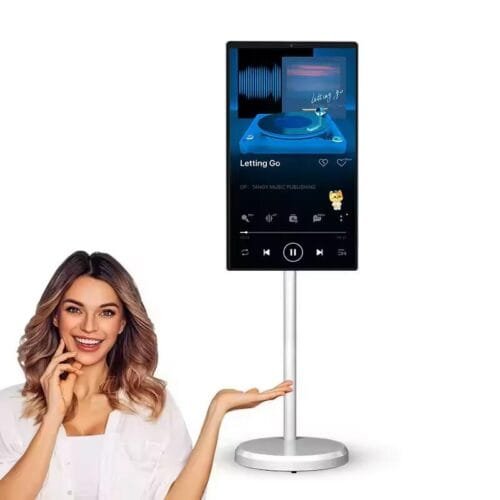 27-Inch Portable Tv Monitor On Wheels Touch Screen 1080p 64GB Storage Smart Screen,Portable Monitor Rotating Display With Mobile Base,With Built-in Battery ,Smart Monitor with Type-C Port
27-Inch Portable Tv Monitor On Wheels Touch Screen 1080p 64GB Storage Smart Screen,Portable Monitor Rotating Display With Mobile Base,With Built-in Battery ,Smart Monitor with Type-C Port -
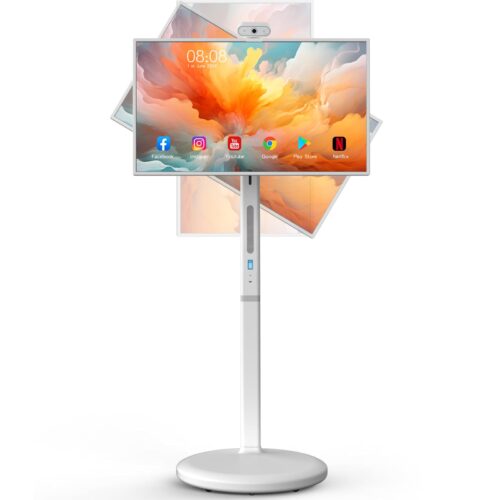 Portable Smart TV 32″ 1080P Touch Screen Monitor on Wheels, Android OS 13 Built-in Battery, Detachable Camera and Stand, Full Swivel Rotation Rolling Tablet for Kitchen, Bedroom, Outdoors
Portable Smart TV 32″ 1080P Touch Screen Monitor on Wheels, Android OS 13 Built-in Battery, Detachable Camera and Stand, Full Swivel Rotation Rolling Tablet for Kitchen, Bedroom, Outdoors -
 Stand by Me TV 21.5-Inch 1080P Portable TV on Wheels Touch Screen Monitor, Built in Battery, Full Swivel Rotation, Android12, 60Hz Refresh Rate
Stand by Me TV 21.5-Inch 1080P Portable TV on Wheels Touch Screen Monitor, Built in Battery, Full Swivel Rotation, Android12, 60Hz Refresh Rate
